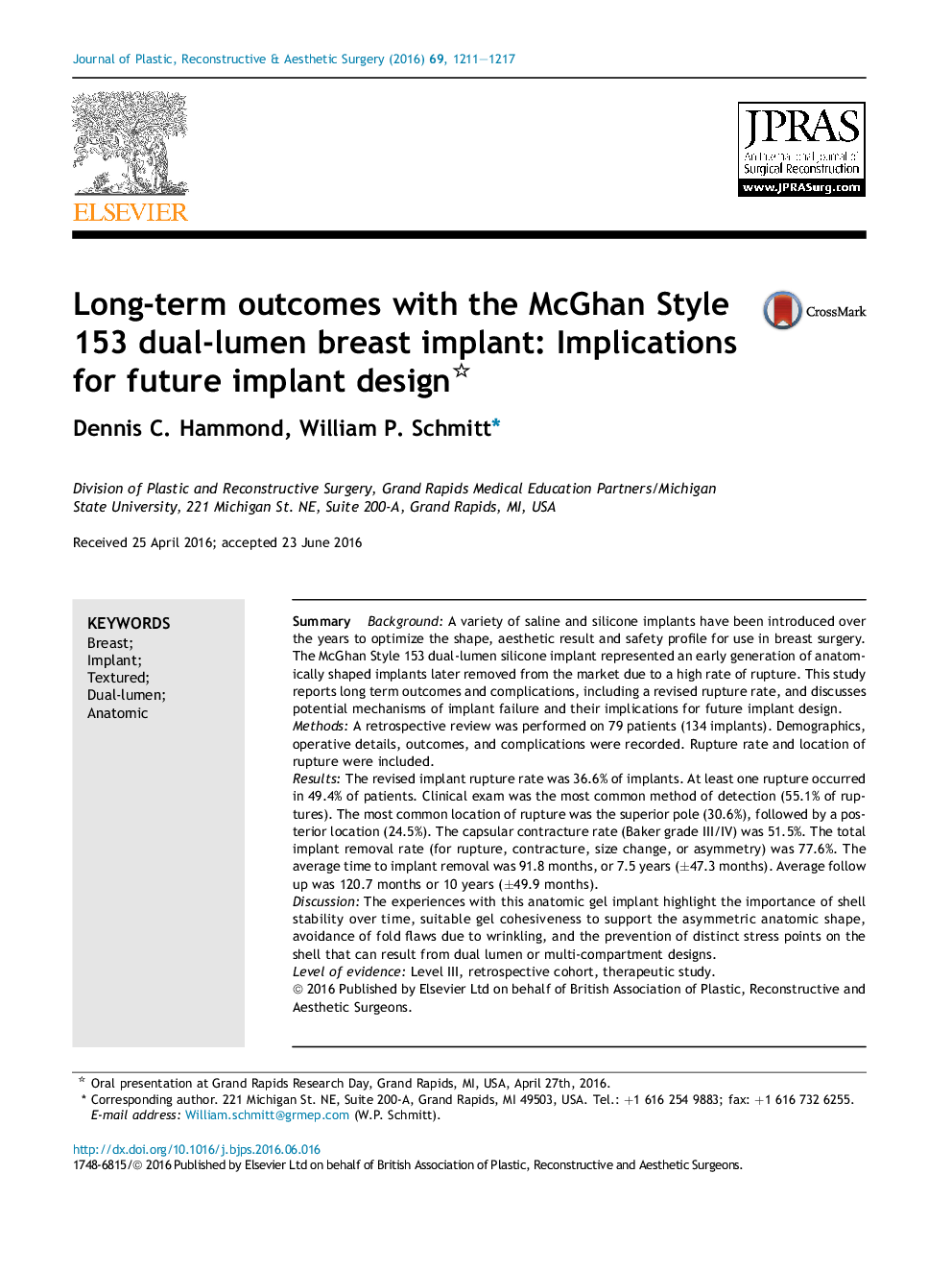| Article ID | Journal | Published Year | Pages | File Type |
|---|---|---|---|---|
| 4117117 | Journal of Plastic, Reconstructive & Aesthetic Surgery | 2016 | 7 Pages |
SummaryBackgroundA variety of saline and silicone implants have been introduced over the years to optimize the shape, aesthetic result and safety profile for use in breast surgery. The McGhan Style 153 dual-lumen silicone implant represented an early generation of anatomically shaped implants later removed from the market due to a high rate of rupture. This study reports long term outcomes and complications, including a revised rupture rate, and discusses potential mechanisms of implant failure and their implications for future implant design.MethodsA retrospective review was performed on 79 patients (134 implants). Demographics, operative details, outcomes, and complications were recorded. Rupture rate and location of rupture were included.ResultsThe revised implant rupture rate was 36.6% of implants. At least one rupture occurred in 49.4% of patients. Clinical exam was the most common method of detection (55.1% of ruptures). The most common location of rupture was the superior pole (30.6%), followed by a posterior location (24.5%). The capsular contracture rate (Baker grade III/IV) was 51.5%. The total implant removal rate (for rupture, contracture, size change, or asymmetry) was 77.6%. The average time to implant removal was 91.8 months, or 7.5 years (±47.3 months). Average follow up was 120.7 months or 10 years (±49.9 months).DiscussionThe experiences with this anatomic gel implant highlight the importance of shell stability over time, suitable gel cohesiveness to support the asymmetric anatomic shape, avoidance of fold flaws due to wrinkling, and the prevention of distinct stress points on the shell that can result from dual lumen or multi-compartment designs.Level of evidenceLevel III, retrospective cohort, therapeutic study.
